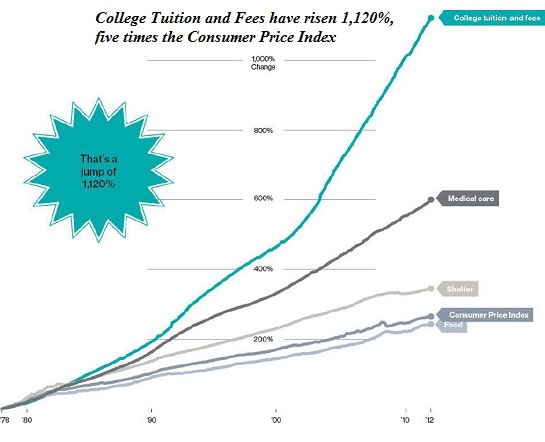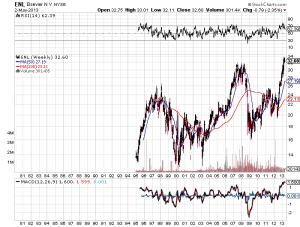
What Will Scientific Publishing Be Like Ten Years from Now?
Economist published an informative article to explain the economics of scientific publishing.
Open-access Scientific Publishing is Gaining Ground
We will highlight the major points in following paragraph before speculating on what comes next.
Market sizes:
-
Elsevier, a Dutch firm that is the worlds biggest journal publisher, had a margin last year of 38% on revenues of 2.1 billion ($3.2 billion).
-
Springer, a German firm that is the second-biggest journal publisher, made 36% on sales of 875m ($1.1 billion) in 2011 (the most recent year for which figures are available).
-
Outsell, a Californian consultancy, estimates that open-access journals generated $172m in 2012. That was just 2.8% of the total revenue journals brought their publishers (some $6 billion a year), but it was up by 34% from 2011 and is expected to reach $336m in 2015.
Who are the open-source leaders?
Meet your new boss. It is the same as old boss :)
-
The biggest is BioMed Central, part of Springer. It was founded in 2000 and in February it published its 150,000th paper and also launched its 250th periodical.
-
Days later Nature Publishing Group (NPG), which owns Nature and 81 other journals, and which itself belongs to the Georg von Holtzbrinck Publishing Group, another German firm, took control of Frontiers, a Swiss open-access platform with 30 titles in 14 scientific fields. That will take NPGs tally of open-access journals to 46, and increase the number of free papers it publishes each year by 5,000, to 7,300.
-
In the past year Elsevier has more than doubled the number of open-access journals it publishes, to 39.
-
And even in those that usually charge readers (such as Cell and the Lancet), paying a publication fee makes a paper available free immediately.
How much does it cost to run an electronic journal?
- ArXiv is hosted by Cornell University at a cost of $830,000 a year.
Who are the new guys? Frontiers, PLoS, PeerJ.
What are old guards doing to fight back? They are creating own open-source journals with no publication fee - eLife, Episciences (piggyback on ArXiv).
-——————————————————–
Up to above paragraph are written based on the Economist article. Let us speculate on what comes next.
10 years later
Suppose the academic journals did not exist and young scientists of today wanted to build an infrastructure to communicate effectively. Will they create the expensive journals, work for them for free and then get their articles locked up? That does not make sense at all. We expect the publication model of ten years later to be completely distributed and it will use all benefits of ‘online publication’ rather than recreating paper publication as web text. Also, we expect search engines and social communities to be the primary sources useful information. A newly uploaded arxiv paper explores those aspects regarding twitter.
The Role of Twitter in the Life Cycle of a Scientific Publication
Twitter is a micro-blogging social media platform for short messages that can have a long-term impact on how scientists create and publish ideas. We investigate the usefulness of twitter in the development and distribution of scientific knowledge. At the start of the ‘life cycle’ of a scientific publication, twitter provides a large virtual department of colleagues that can help to rapidly generate, share and refine new ideas. As ideas become manuscripts, twitter can be used as an informal arena for the pre-review of works in progress. Finally, tweeting published findings can communicate research to a broad audience of other researchers, decision makers, journalists and the general public that can amplify the scientific and social impact of publications. However, there are limitations, largely surrounding issues of intellectual property and ownership, inclusiveness and misrepresentations of science sound bites. Nevertheless, we believe twitter is a useful social media tool that can provide a valuable contribution to scientific publishing in the 21st century.
All those technological changes are generally expected. The following part is what nobody in publishing industry expects at all. Add a second condition - ‘no government funding’ to our previous description and you will see why even models like PLoS are heading for extinction. In such situation, it is expected that academics/scholars will earn money from their publications rather than paying someone to get their research published. The change will come very fast. Do not get fooled by the apparent slow pace of change of present, and take a hint from Ernest Hemingway’s quote -
How did you go bankrupt?” Two ways. Gradually, then suddenly.
It is not only the publishing industry is broken, but the entire panoply of academic tenure, student debt, government-funded research that is broken. In fact, the college industry is the most broken of all among various US sectors, and the following chart is the best guide.

If you think ‘STEM’ is more productive, it is another government-funded vacuous buzzword with no real economic backing.
Getting a college degree, even in the STEM (science, technology, engineering and math) subjects, no longer guarantees a job. As I have often noted, producing more graduates does not magically create jobs. The economy can only support a certain number of jobs in any one field. Producing 10 times as many graduates in that field does not create 10 times more jobs.
According to this analysis of supply, employment, and wage trends in information technology (IT) and other high-tech fields, Guestworkers in the high-skill U.S. labor market (via B.C.), only half of those graduating with STEM degrees get jobs in STEM fields.
Interestingly, 36% of IT workers do not hold a college degree, and only 24% of IT workers have a four-year college degree. As one would expect in a nation with a strong tradition of immigration, many guest workers (i.e. people seeking citizenship via working in the U.S.) also have degrees in the STEM fields.
This report Where are the STEM jobs? (via B.C.) predicts 8.65 million STEM jobs in the U.S. by 2018, which is a mere 6% of the current workforce of 142 million.
The best way to see the future is to expect rapid drop in all kinds of government backing from the economy and figure out how the publication system will adjust. That rapid drop can happen over two years of 2015-2017, or two years of 2020-2022 or any other period. We do not know when the adjustment will take place except that we are sure the government support will go away all of a sudden and real economy of academic publishing will show up. Our original assumption - “Suppose the academic journals did not exist and young scientists of today wanted to build an infrastructure to communicate effectively” - will show up differently. The academic journals will become so expensive due to other social changes that they will non-existent for most practical purposes.
For the time being there is no perceived danger as the stock price of Elsevier is at all time high -
